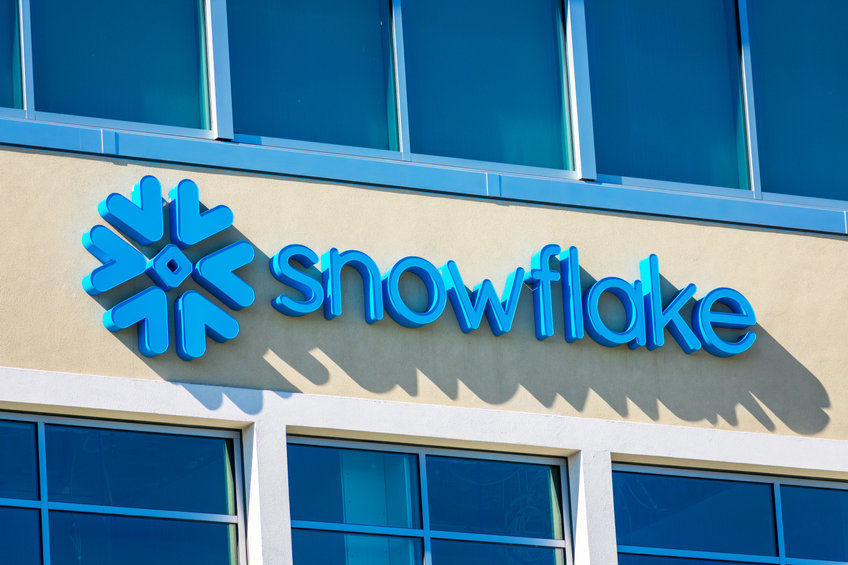On November 6th, Snowflake Inc. (NYSE: SNOW) saw its stock climb by about 4% after Monness Crespi Hardt upgraded the stock to a “Buy” with a price target of $140.
The Monness analysts highlighted Snowflake’s significant valuation discount following a 41% year-to-date decline and a 73% drop from its 2020 peak.
They noted Snowflake’s strategic focus on accelerated innovation, which they expect to yield results over the next 12 to 18 months.
Interestingly, unlike other tech firms grappling with structural overhauls, Snowflake has managed to steer clear of drastic restructuring measures.
This offers Snowflake potential flexibility in managing its expenses, which may prove beneficial in sustaining margins if required in the future.
Snowflake stock: analyst opinions and target prices
Other analysts have taken varied stances on Snowflake’s potential. Morgan Stanley, for instance, retained its “Equal-Weight” rating, though with a slightly higher target of $175, citing the competitive data cloud market and slowing growth.
Morgan Stanley analyst Keith Weiss has expressed that while Snowflake is innovating with offerings in AI and data engineering, growth is likely to remain moderated in the near term.
On October 9, investment firm Argus began covering Snowflake with a “Hold” rating, underscoring a similar view.
Bank of America analysts pointed out Snowflake’s weaker free cash flow performance relative to peers like Adobe and Salesforce, hinting at room for improvement in profitability.
Snowflake: partnerships and customer commitments
Snowflake has been expanding its customer base with a focus on traditional enterprises, evidenced by recent large contracts and a shift toward long-term commitments.
According to CFO Michael Scarpelli, Snowflake recently closed two renewals exceeding $100 million each, along with a $250 million deal earlier in Q4.
This uptick in high-value deals highlights the confidence of large enterprises in Snowflake’s data solutions.
Furthermore, Snowflake’s partnership strategy has enabled it to secure a notable market share across diverse industries, reinforcing its position among major cloud data providers and pointing to a potentially resilient revenue base.
Snowflake stock: financial metrics and customer retention rates
Snowflake’s remaining performance obligations (RPO) rose by 50% to $5.23 billion in Q2, up from $3.54 billion in the same quarter last year.
Additionally, Snowflake reported a net revenue retention rate of 127%, underscoring high customer satisfaction and recurring business.
This retention rate, coupled with Snowflake’s expanding client roster—which includes 510 customers generating over $1 million annually—underscores the company’s strong market traction.
Revenue growth has continued at a steady pace, though it has moderated from earlier triple-digit rates. For fiscal year 2025, the company projects product revenue growth of 26% year-over-year, reaching $3.36 billion, which aligns with Snowflake’s strategy to focus on sustainable growth.
Q3 earnings expectations and operational focus
For the upcoming Q3 earnings, consensus estimates project earnings per share (EPS) of $0.15, indicating a 39% decline year-over-year.
This may reflect Snowflake’s high R&D spending as it pursues aggressive innovation, which could pressure near-term profits.
Nevertheless, its steady revenue growth and customer expansion provide a buffer against earnings volatility.
Snowflake’s operational model, a consumption-based structure rather than a subscription model, gives the company flexibility to scale revenues based on customer usage.
This model supports future revenue potential, particularly as Snowflake builds momentum with new customers who gradually increase platform usage over time.
Snowflake stock valuation
Snowflake’s current valuation metrics indicate an EV/FY26 revenue multiple of 7.9x, a substantial reduction from its former high valuations.
With its price-to-earnings (P/E) forward ratio nearing 200, Snowflake is still a premium growth stock, though now priced at a level some view as reasonable given its long-term growth prospects.
Although its EV/Sales ratio remains high compared to some competitors, Snowflake’s market cap of $38.20 billion and strong cash position of $3.93 billion suggest the company is well-capitalized to invest in growth and pursue buybacks.
Additionally, Snowflake’s share repurchase plan, recently increased to $3 billion, reflects management’s confidence in the company’s valuation at current levels.
With these fundamental foundations laid, let’s now delve into the technical indicators and chart patterns, which may reveal where Snowflake’s stock price could be headed next.
SNOW stock: $110 support holding up
Snowflake’s stock showed strong upward momentum at the end of last year when it climbed from $140 levels to almost $240 by February this year.
Source: TradingView
But, since then they took a massive U-turn which caused them to make fresh all-time lows a few weeks ago at $110.
Though the stock remains weak across long and medium-term timeframes, it has been finding support above $110 for the past few days.
Hence, investors who like analysts at Monness share a bullish view of the company can buy the stock with a strict stop loss at $108.8.
If $110 holds as a support in the medium term, the stock can reach 38.2% Fibonacci retracement near $157 in the next few weeks.
Traders who are bearish on the stock must refrain from initiating fresh short positions unless the stock falls below $110.
The post Is now the perfect entry point for Snowflake stock? here’s what to know appeared first on Invezz

